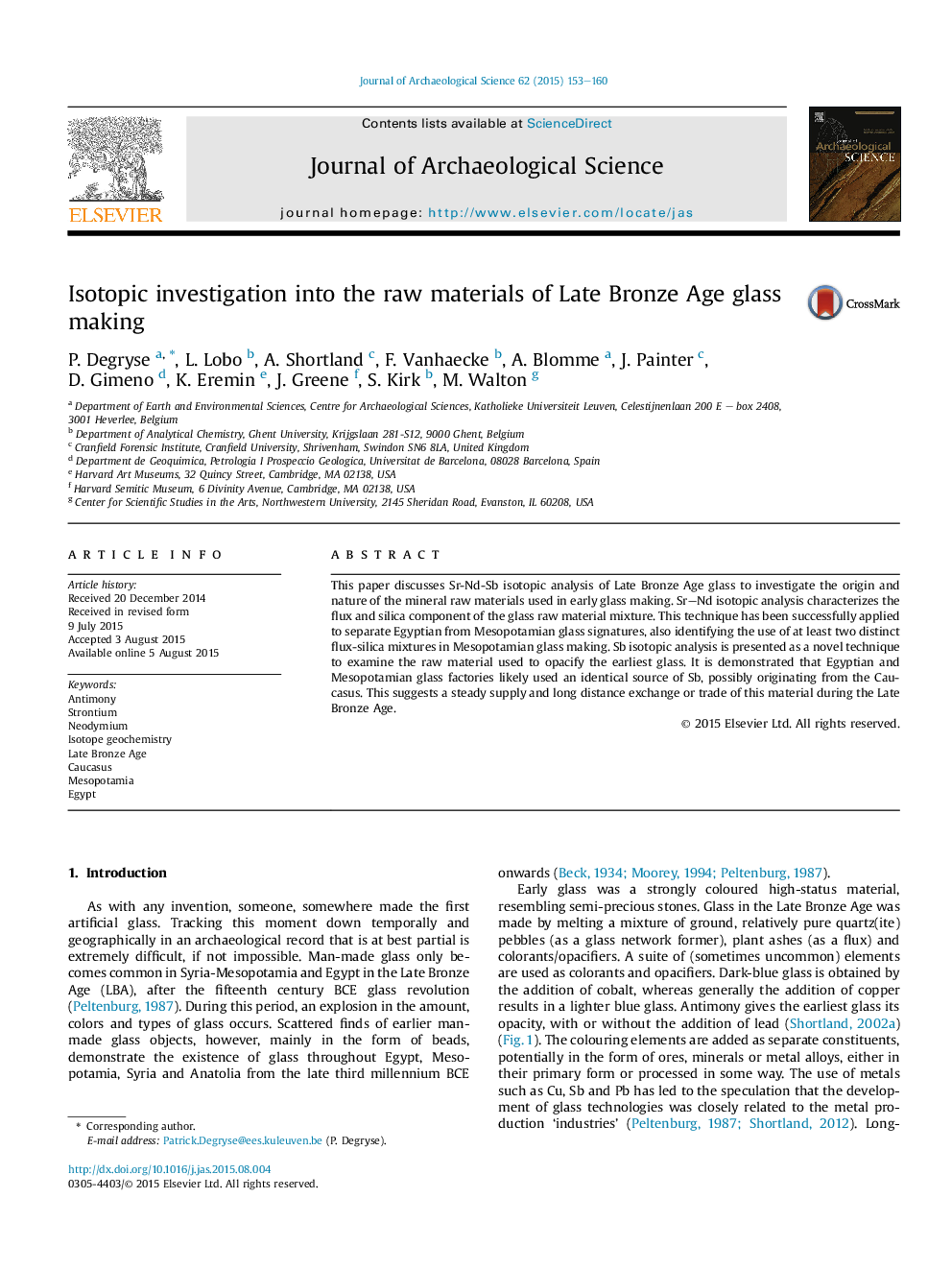| Article ID | Journal | Published Year | Pages | File Type |
|---|---|---|---|---|
| 7441730 | Journal of Archaeological Science | 2015 | 8 Pages |
Abstract
This paper discusses Sr-Nd-Sb isotopic analysis of Late Bronze Age glass to investigate the origin and nature of the mineral raw materials used in early glass making. Sr-Nd isotopic analysis characterizes the flux and silica component of the glass raw material mixture. This technique has been successfully applied to separate Egyptian from Mesopotamian glass signatures, also identifying the use of at least two distinct flux-silica mixtures in Mesopotamian glass making. Sb isotopic analysis is presented as a novel technique to examine the raw material used to opacify the earliest glass. It is demonstrated that Egyptian and Mesopotamian glass factories likely used an identical source of Sb, possibly originating from the Caucasus. This suggests a steady supply and long distance exchange or trade of this material during the Late Bronze Age.
Related Topics
Physical Sciences and Engineering
Materials Science
Materials Science (General)
Authors
P. Degryse, L. Lobo, A. Shortland, F. Vanhaecke, A. Blomme, J. Painter, D. Gimeno, K. Eremin, J. Greene, S. Kirk, M. Walton,
